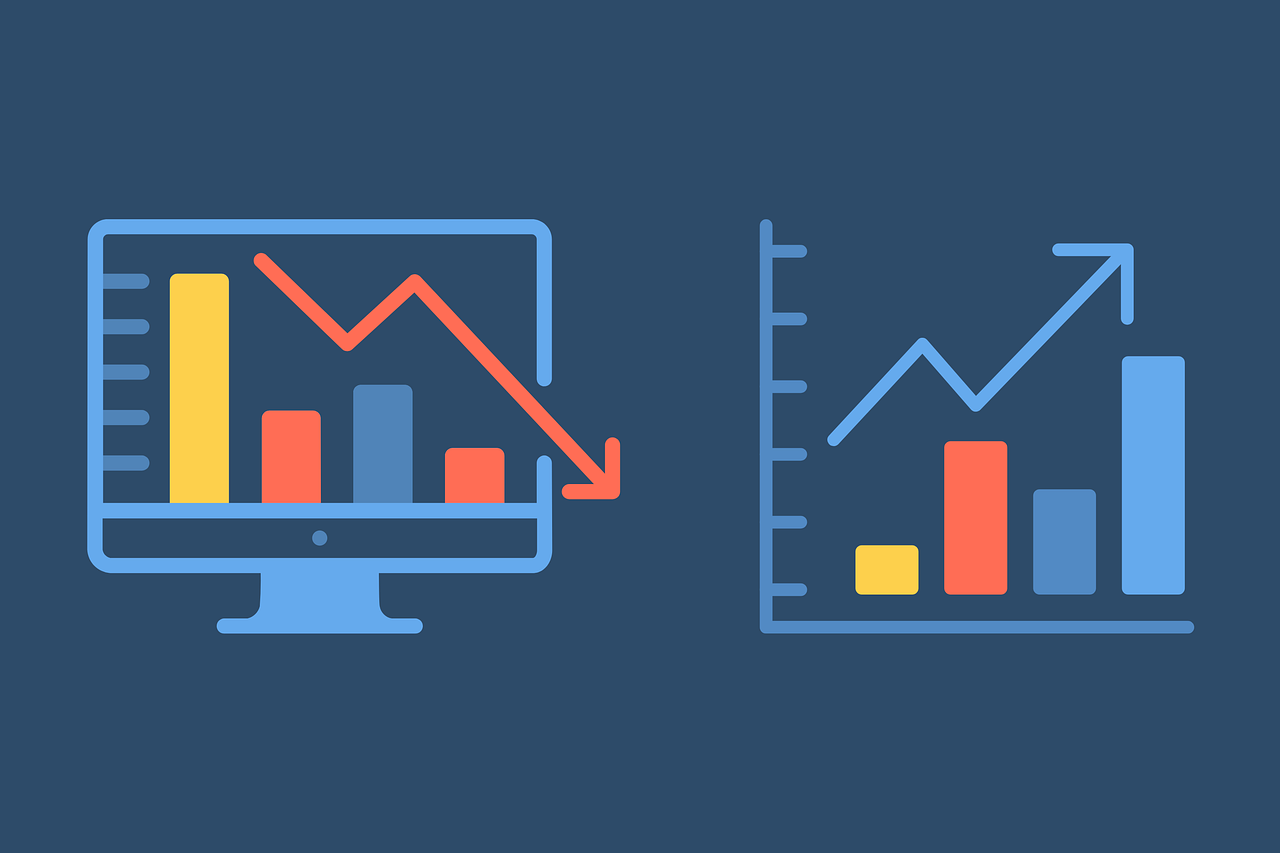B2B Marketing Statistics 2025
Top five B2B marketing statistics at the halfway mark of 2025.

At the approximate halfway mark of 2025, here are recent B2B marketing stats that caught our attention.
- B2B companies continue to increase ad spending and the market is poised to triple in size next year as compared with pre-Covid performance in 2019. At about 30X the size, B2C digital advertising gets most of the media coverage, but B2B activity has steadily increased over the years and is approaching a $50 billion marketplace today. Fueled in large part to early-stage tech’s full embrace of digital marketing and advertising over the past decade, typically stodgy sectors like finance and professional services are entering the fray — especially on LinkedIn — and are helping the continued expansion.
- Click-through rates have plummeted in the year since Google introduced AI-generated summaries. Bain research finds that zero-click searches—when users are satisfied with the AI summary and go no further—are now the default for consumers and early data shows the same trend in B2B searches, with click-through rates falling by as much as 30% in some categories, including B2B software. Adapting to this new reality calls for new muscles and metrics—and most B2B marketers are not ready.
- Microsoft Bing advertising grew 21% year/year. This is good news for B2B advertisers because we want more credible, financially secure advertising options in the mix. And it’s not a quarterly or even annual phenomenon — Microsoft/Bing advertising has grown by double digits in all but one of the past 16 quarters. With 4% market share, this news by no means ignites a Google Ads vs Bing Ads debate, but the Microsoft search engine processes 500 million inquiries every day, and many of them of the business-to-business variety.
- In the face of roaring AI, the demise of Google has been largely exaggerated, as evidenced by its 12% increase in ad-related sales during the most recent quarter. This happened while twin threats to the business were at full throttle: economic uncertainty and new technology emergence (artificial intelligence). Advertising is the straw that stirs the Google drink – the company will figure out how to navigate this most recent wave of innovation and get to the other side successfully. It’s not a slam dunk but big companies with cash and strong offerings survive, and 90% market share in the search business is a heckuva position.
- 45% of B2B companies use LinkedIn now, according to the Hubspot annual State of Social Trends report. This suggests both a necessary critical mass for widespread adoption — there are a billion people and 67 million companies on the platform today — and also plenty of room for early-ish mover advantage. Beware of the unique rules of “social selling” and also remember that, for many buyers, social media is the new de facto word-of-mouth. A recent LinkedIn study found that “more buyers cared about being able to explain themselves after a failure” than about whether the thing worked in the first place” and use social media to gather intel about a company’s credibility and defensibility, so being active and credible on the platform is increasingly becoming non-optional.
RESOURCES & FURTHER READING
- Digital marketing statistics of 2025: H1 by the numbers (via Marketing Dive)
###########
Tim Bourgeois is a LinkedIn marketing consultant at East Coast Catalyst, a B2B PPC agency. Contact him at tbourgeois (at) eastcoastcatalyst.com to learn how ECC can help your organization with B2B inbound lead generation.
